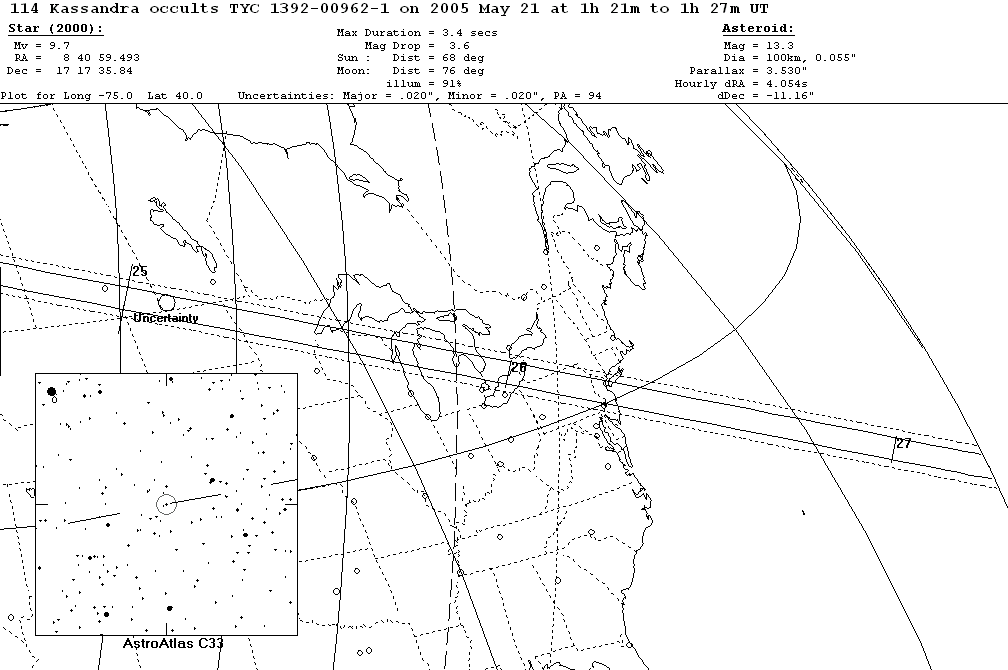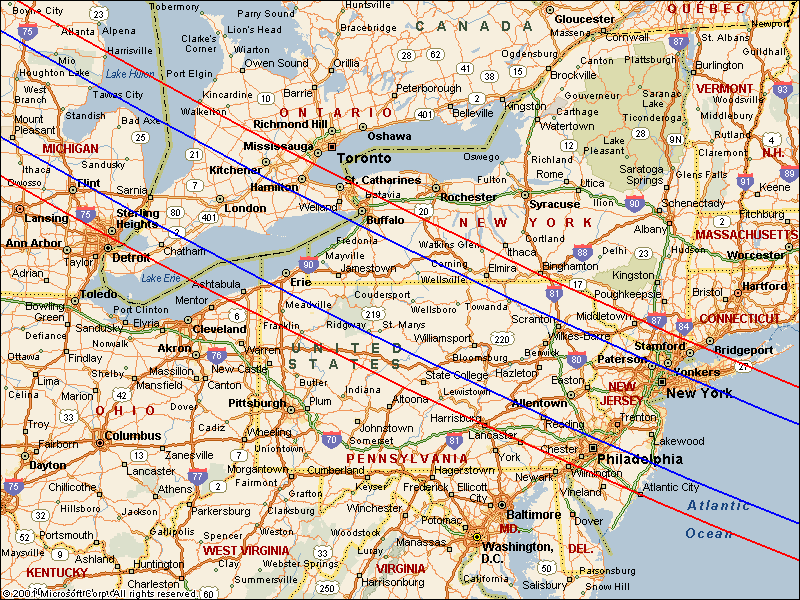
Map courtesy of Steve Preston -- see the Asteroid Occultation Update page for upcoming events.
On the night of May 20/21, 2005, the asteroid (114) Kassandra was predicted to occult the star TYC 1392-00962-1 for observers in the northeast US and central Canada.

Map courtesy of Steve Preston -- see
the Asteroid Occultation Update page
for upcoming events.
The RIT Observatory near Rochester, New York,
fell about 143 kilometers north of the center of the predicted shadow track. That was about 2-sigma north of the predicted northern edge of the shadow, so, if the predictions were correct, we would see nothing.

We set up to observe the event. RIT physics major George Privon came to help out -- thanks!
Our setup was:
I arrived about one hour before the event and found George already there and waiting -- sorry, George! We placed a PC-164C video camera on the back of the 12-inch telescope and ran the signal through a Kiwi OSD video time insertion unit: it places GPS-derived timestamps on every frame of the video. The unit picked up a GPS lock just fine, and the VCR (donated by RIT Physics major Tom Schwarting, who is graduating tomorrow -- congratulations, Tom!) recorded the signal just fine.
The sky was very bright, as the event was predicted to occur when the Sun would be only 10 degrees below the horizon. We were able to see a fifth-mag star without trouble some 20 minutes before the event, but could not see the ninth-magnitude target star yet. We waited, and eventually, about four or five minutes prior to the predicted time, we could finally see the star on our video monitor. There was a fainter star nearby to the East, about magnitude 11, which also appeared (albeit at much lower signal-to-noise ratio), so we were pretty sure we had the right location. When we slewed north a few arcminutes, we picked up a mag 10 star on the charts, and became positively certain that we were on the proper target.
We watched, and waited, and watched ... and the predicted time passed. We watched continuously from about 01:24:00 UT to about 01:29:00 UT and saw nothing. I took the tape home later and replayed it, and still saw nothing. The prediction was for a drop of up to 3.6 magnitudes, which would have caused the star to disappear completely, for up to 3.4 seconds.
We saw no change in brightness, so declare a "MISS" from our location. I have sent a report to Jan Manek: